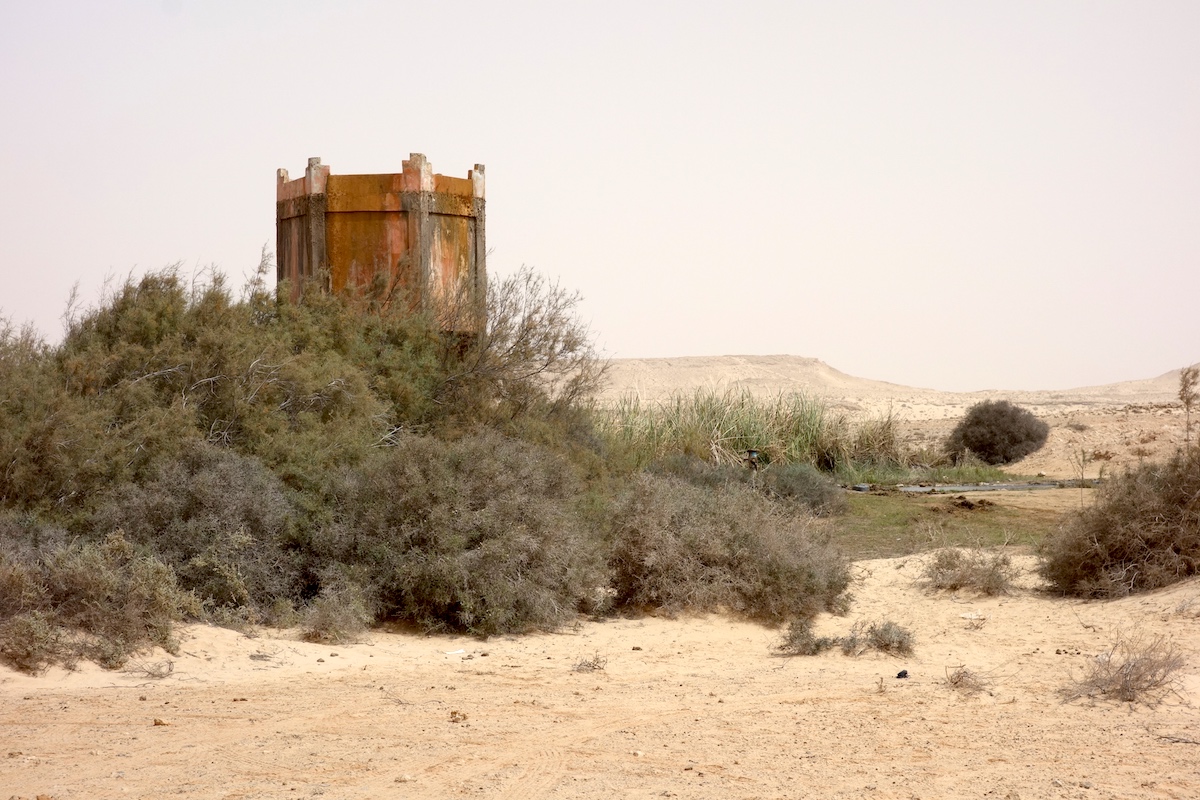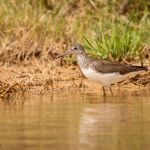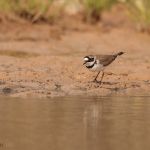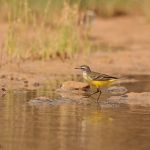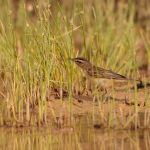After failing to see Royal Tern on the first day we were keen to make amends and in the absence of any recent information decided to head to the exposed sand flats in the NW corner of the bay where we had seen Sandwich Terns and Slender-billed Gulls the previous day in the hope of finding an early morning gathering. After picking up water, bread, cheese and halal pate, very pink and with the consistency of dry spam, from the petrol station we headed up the road and decided to scan from the kite surfing lodge and eat our breakfast with the sun behind us. With nothing bar a couple of Caspian Terns on the sand flats we turned our attention to the scrub which held a few Willow warblers and the getting some images of the very obliging Thekla Larks and Black Wheatears that were hanging around the car park.
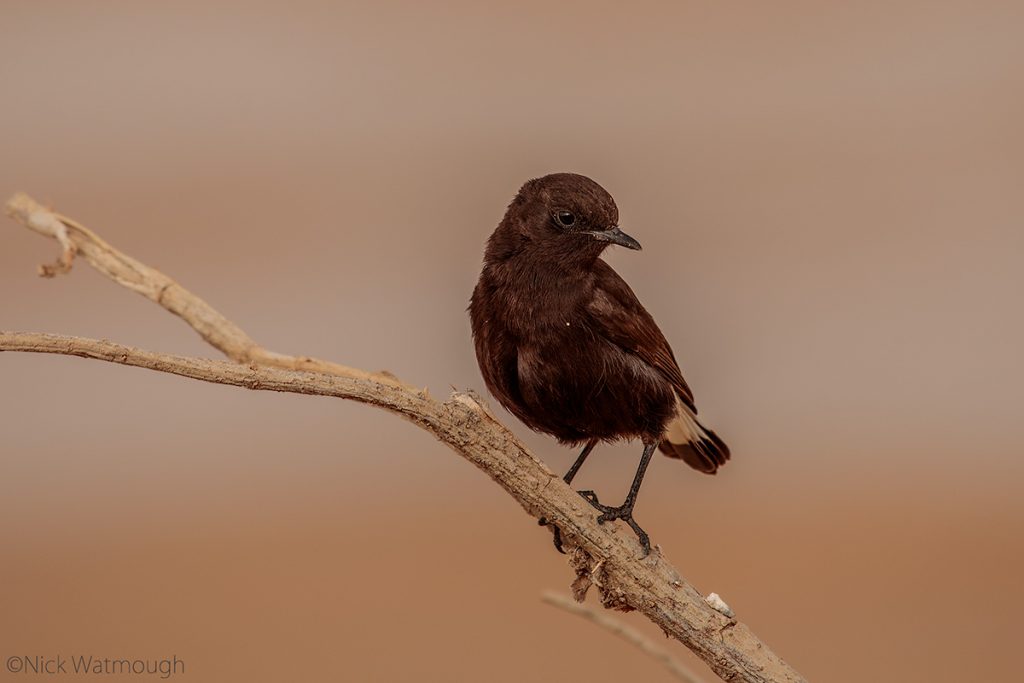
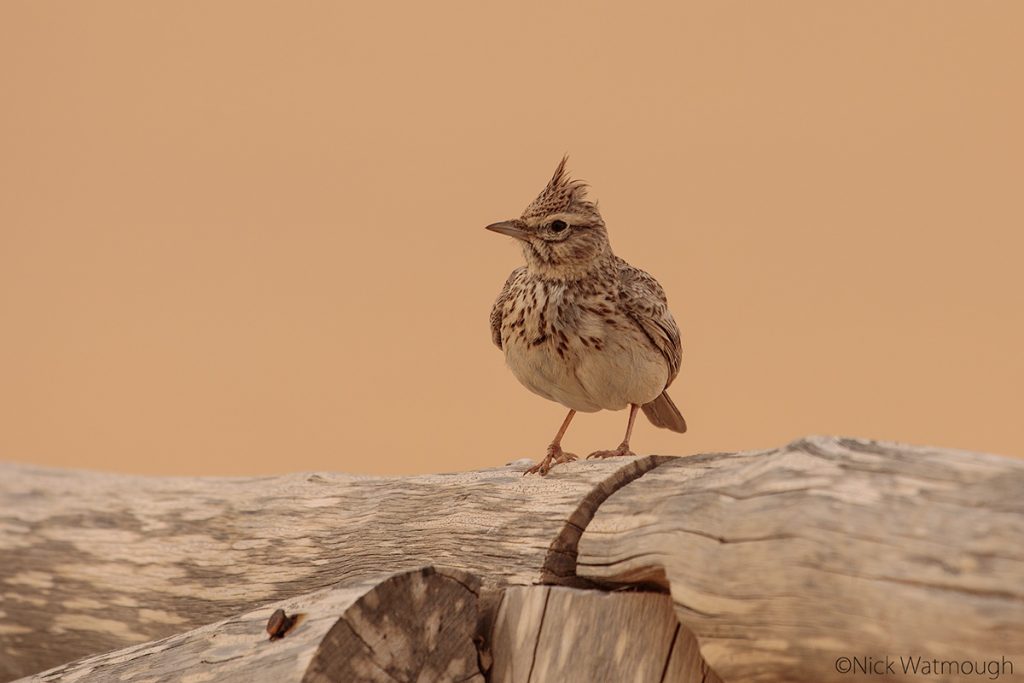
Just as we were about to pack up and move on a male Marsh Harrier drifted across the bay and appeared behind us where it startled a large falcon – after a brief bout of handbags the harrier disappeared and what turned out to be a Lanner shot out in front of us carrying a recently killed House Sparrow and landed ca 250 m away on the sand flats to consume its mid-morning snack.

The scrub around the car park held a few Willow Warblers and a Grasshopper Warbler whilst on the way out what would turn out to be the first of many male Western Subalpine Warblers disgraced itself in front of Graham’s camera. We headed North West to the roundabout/checkpoint at the entrance to the peninsular and after resolving a misunderstanding about missing a stop sign, which in our defence was in Arabic, headed North a few km to a Scrub Warbler site. The directions were fine, but the habitat did not appear to be very different from the surrounding desert and I was not surprised we did not see Scrub Warbler. We did to our surprise flush a Short-eared Owl which was one of the week’s less expected birds.
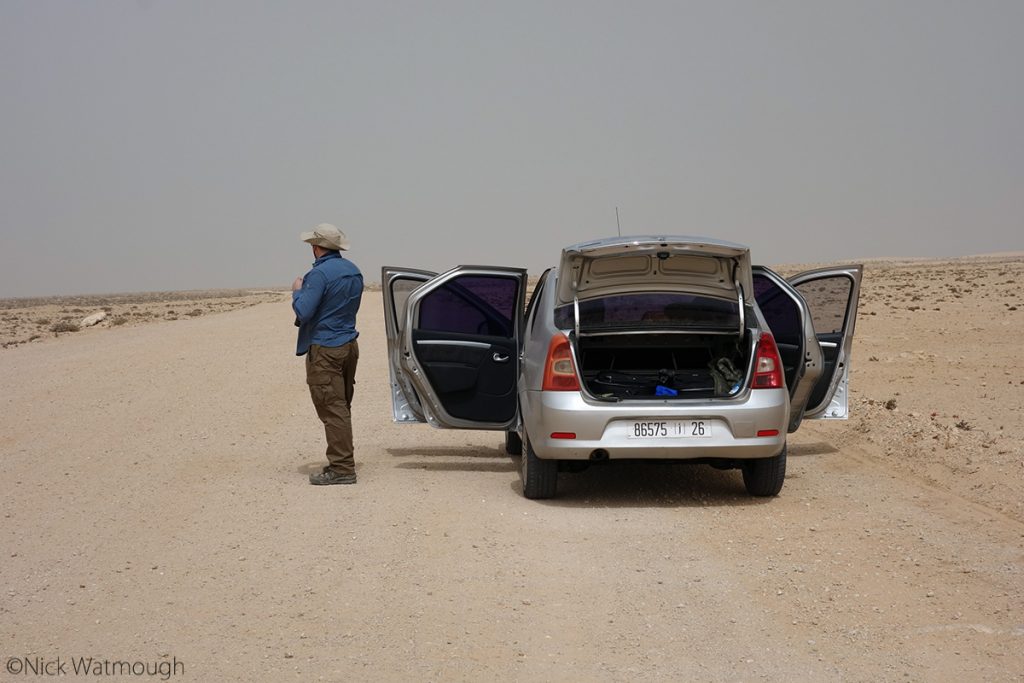
We returned to the roundabout, navigated the check point and drove down the Bir Azerane road. We had directions to a water source at Km 57 – since we unsure if this was from Dakhla or Bir Azerane we decided to see if it was the former and if not head back rather than spend the rest of the morning driving; which is how it turned out. All we found was a single White Stork in a herd of goats. We had driven past a wadi that contained a few bigger trees that looked as if it might support a few migrants, so on the way back we stopped for a look. As we entered the vegetation I flushed a Desert Wheatear with a a strong exhibitionist streak.
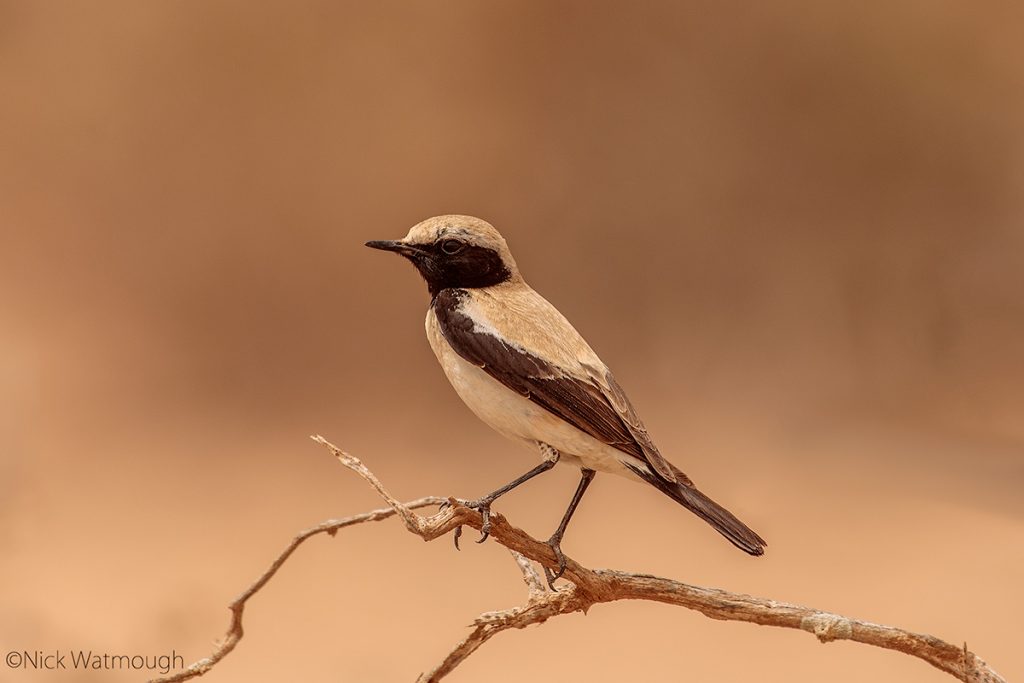
As we progressed through the wadi we found just a few migrants and a Great Grey Shrike. I was on the track of a Sylvia warbler which turned out to be a Common Whitethroat when Graham called to me to say that he had flushed a bird which appeared to be a small owl. He tracked it down to a large acacia and suggested I stopped wasting time on the warbler as he thought his bird was “Otus” Otus scops, Eurasian Scops Owl, has been my absolute Western Palearctic bogey bird – I have heard loads all around the Mediterranean basin, but never clapped eyes on which means it has never made it onto my list. But birding never ceases to surprise and here in the middle of the Sahara was a migrant Eurasian Scops Owl that became number 692 on my Western Palearctic list (WP#692).

We still had a desire to find somewhere with water so headed back to the check point again and headed for the start of the Assouerd Road which we drove for twenty minutes until we found the famous water tower known to birders as Gleb Jeblaine, but which should correctly be called Tachaktant (Gleb Jeblaine is actually the settlement 4 km to the West). The well that fills the tower has a permanent leak that fills a series of small muddy pools surrounded by vegetation where desert species (including, Thick-billed Lark and Crowned Sandgrouse) come to drink and migrants come to rest. Consequently there was a much greater diversity of species that we had encountered previously including Spotted Crake, Green Sandpiper, Little Ringed Plover, Bluethroat and Sedge, Grasshopper, Willow and Western Subalpine Warblers.
Some Tachaktant migrants (click on the thumbnail to enlarge)
As well as giving birds the opportunity to drink the pools offer the opportunity for a wash and brush up and towards the end of our visit we were entertained by a Tree Pipit that was taking full advantage.
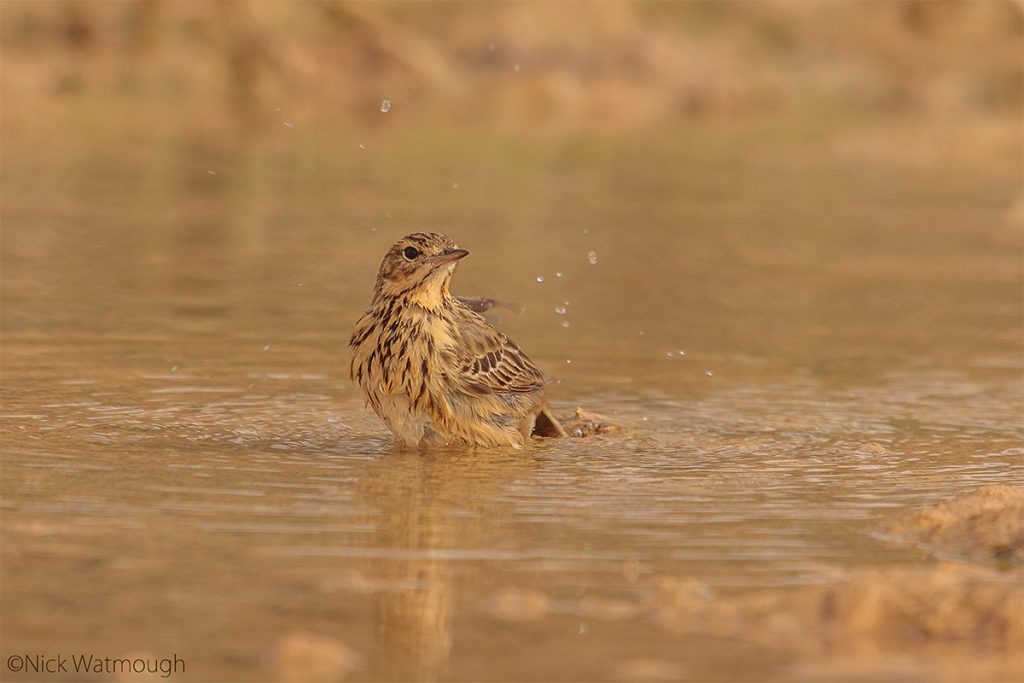
Whilst we were a Tachaktant we ran into two other groups of birders, one French the other Dutch, who had already been out East to Assouerd; neither had seen Golden Nightjar and both reported that Sudan Golden Sparrow was difficult. Both were heading back to Dakhla for some R&R before another attempt. The Dutch team had not seen African Desert Warbler either. but were more than happy to exchange for GPS coordinates for gen on where Royal Tern had been seen regularly near Dakhla. Armed with this new information on Royal Tern we sped back towards Dakhla and the Royal Tern site which we had driven past the previous afternoon. No Royal Terns, although several flocks of Sandwich flew past, but a Western Bonelli’s Warbler was feeding along the cliff edge and a Black-crowned Night Heron in a rock pool making short work of a shoal of fish.
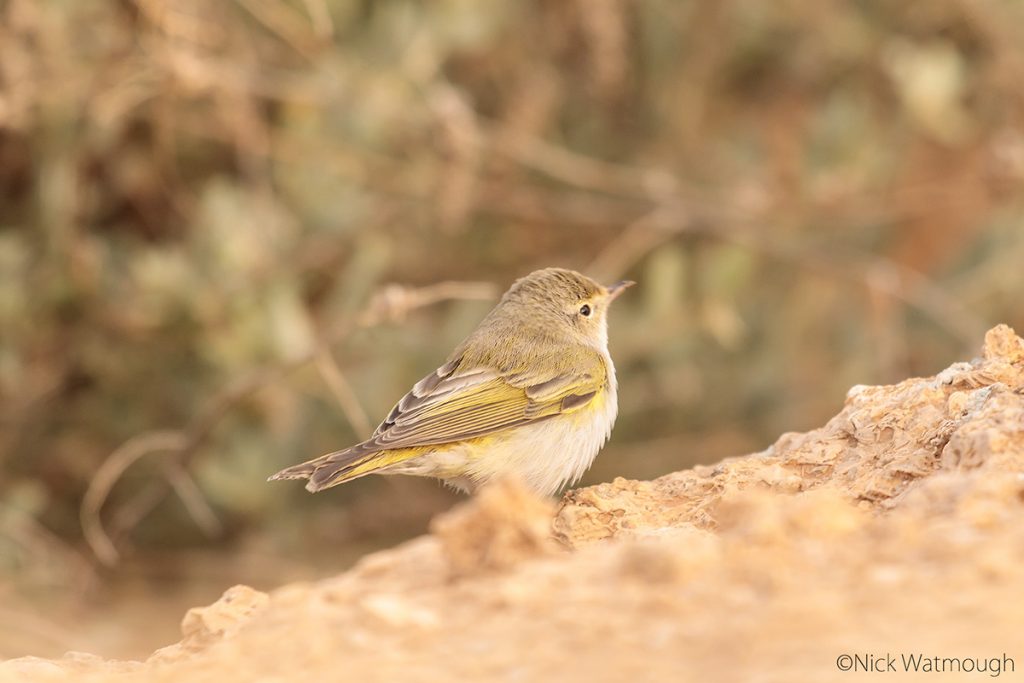
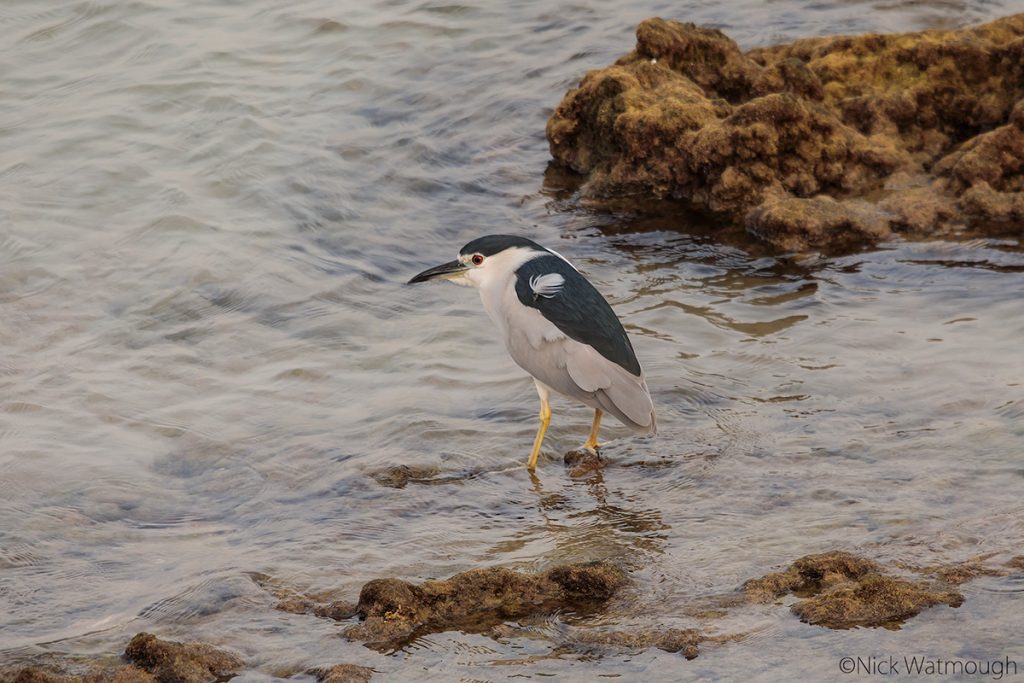
Back at the the hotel and with WiFi I picked up a couple of messages from Martina asking that we meet with Nico to finalise plans for the trip. We were more than happy to do so, but it delayed our trip to the Villa Dakhla for dinner and beer where we found our Dutch colleagues and caught up on the rest of their day’s birding.

